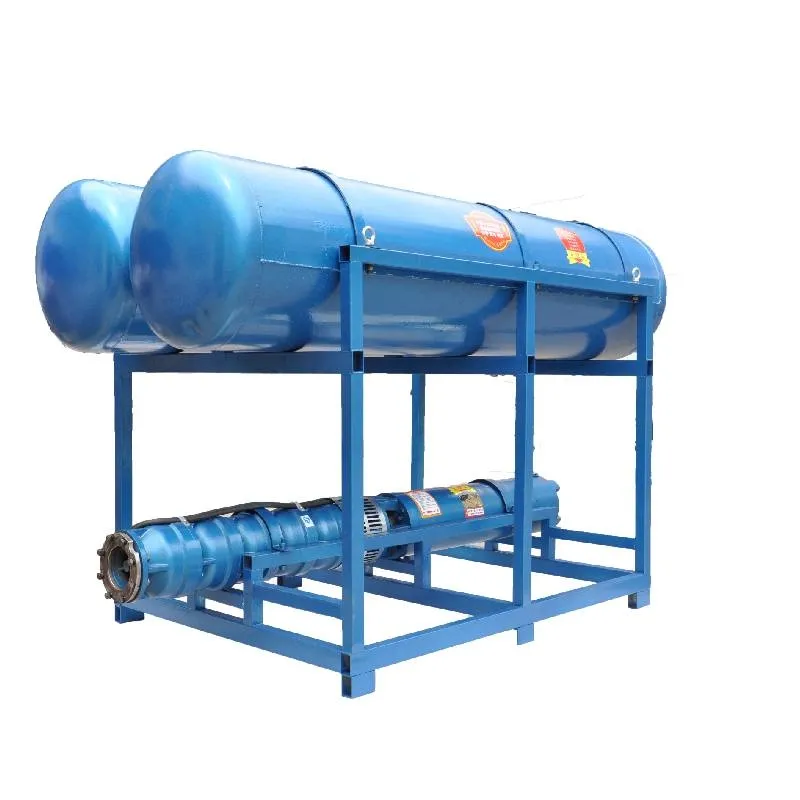நவ் . 21, 2024 06:47 Back to list
priming a submersible well pump
Priming a Submersible Well Pump A Step-by-Step Guide
Priming a submersible well pump is a crucial process that ensures your water supply system operates effectively. Unlike jet pumps that are installed above ground and must be primed before starting, submersible pumps are submerged underwater, which typically eliminates the need for manual priming. However, issues can arise that may necessitate priming, especially after maintenance or if the pump has been out of service. Here’s a step-by-step guide to priming a submersible well pump safely and efficiently.
Understanding the Basics
A submersible well pump works by pushing water to the surface rather than pulling it. It is typically located deep within a well, encased in a protective housing, and connected to a power source and a discharge pipe. One of the common issues that may cause the pump to lose prime includes a drop in water levels, air leaks in the suction line, or even mechanical failure. Thus, it’s essential to ensure that the pump is functioning properly.
Step 1 Turn Off the Power
Before you start any work on the pump, make sure to turn off the power supply. Safety should always be your top priority when dealing with electrical equipment. This step prevents any accidental electrical shock or damage to the pump itself.
Step 2 Inspect the Pump and Components
Check the condition of the well and pump components. Look for any visible signs of wear, corrosion, or damage. Pay attention to the discharge pipe and fittings; any air leaks can cause problems in the priming process. Also, make sure the pump is submerged in water; if the water level has dropped below the pump, it may require additional water to be added to the well.
priming a submersible well pump

Step 3 Fill the Pump with Water
If priming is necessary, fill the pump with water through the discharge line. This can often be done with a garden hose or other water source to ensure that the pump is full. This step is essential for eliminating any air pockets in the pump and ensuring that it can generate the suction needed to move water.
Step 4 Check for Air Leaks
After filling the pump with water, examine all connections for potential air leaks. Any gaps or loose fittings should be tightened or sealed to prevent air from entering the system. If a leak is found, take the necessary steps to repair it before proceeding.
Step 5 Restart the Pump
Once you've filled the pump and ensured there are no air leaks, turn the power back on. Watch for water to begin flowing through the discharge pipe. In some cases, it may take a few moments for water to start flowing as the pump works to build pressure.
Conclusion
Priming a submersible well pump might seem daunting, but by following these steps and ensuring that your equipment is well-maintained, you can facilitate a smooth process. Keeping a close eye on water levels and regularly inspecting your pump will help prevent any issues that may require priming. If problems persist, consider reaching out to a professional for support. Remember, proper maintenance is key to ensuring the longevity and efficiency of your submersible well pump.
-
Submersible Water Pump: The Efficient 'Power Pioneer' of the Underwater World
NewsJul.01,2025
-
Submersible Pond Pump: The Hidden Guardian of Water Landscape Ecology
NewsJul.01,2025
-
Stainless Well Pump: A Reliable and Durable Pumping Main Force
NewsJul.01,2025
-
Stainless Steel Submersible Pump: An Efficient and Versatile Tool for Underwater Operations
NewsJul.01,2025
-
Deep Well Submersible Pump: An Efficient 'Sucker' of Groundwater Sources
NewsJul.01,2025
-
Deep Water Well Pump: An Efficient 'Sucker' of Groundwater Sources
NewsJul.01,2025
-
 Submersible Water Pump: The Efficient 'Power Pioneer' of the Underwater WorldIn the field of hydraulic equipment, the Submersible Water Pump has become the core equipment for underwater operations and water resource transportation due to its unique design and excellent performance.Detail
Submersible Water Pump: The Efficient 'Power Pioneer' of the Underwater WorldIn the field of hydraulic equipment, the Submersible Water Pump has become the core equipment for underwater operations and water resource transportation due to its unique design and excellent performance.Detail -
 Submersible Pond Pump: The Hidden Guardian of Water Landscape EcologyIn courtyard landscapes, ecological ponds, and even small-scale water conservancy projects, there is a silent yet indispensable equipment - the Submersible Pond Pump.Detail
Submersible Pond Pump: The Hidden Guardian of Water Landscape EcologyIn courtyard landscapes, ecological ponds, and even small-scale water conservancy projects, there is a silent yet indispensable equipment - the Submersible Pond Pump.Detail -
 Stainless Well Pump: A Reliable and Durable Pumping Main ForceIn the field of water resource transportation, Stainless Well Pump has become the core equipment for various pumping scenarios with its excellent performance and reliable quality.Detail
Stainless Well Pump: A Reliable and Durable Pumping Main ForceIn the field of water resource transportation, Stainless Well Pump has become the core equipment for various pumping scenarios with its excellent performance and reliable quality.Detail
